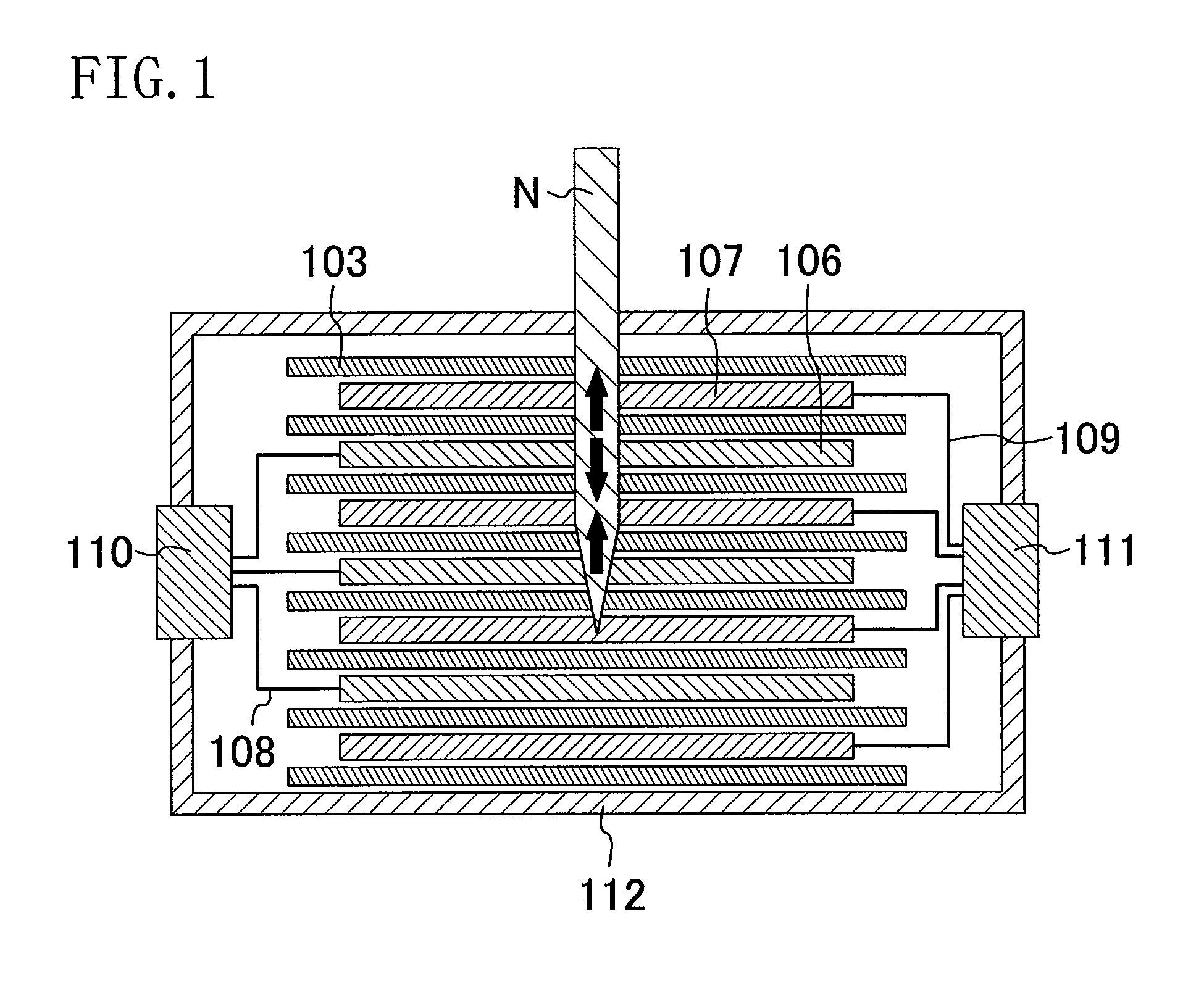Lithium ion secondary battery
a lithium ion secondary battery and lithium ion battery technology, applied in the direction of cell components, final product manufacturing, sustainable manufacturing/processing, etc., can solve the problems of rapid increase of temperature inside the lithium ion secondary battery and battery fume emission, so as to prevent the occurrence of battery fume emission, prolong the service life, and maintain the high power properties of the battery
- Summary
- Abstract
- Description
- Claims
- Application Information
AI Technical Summary
Benefits of technology
Problems solved by technology
Method used
Image
Examples
working example 1
[0086]A method for producing a battery according to Working Example 1 will be hereafter described in detail.
[0087]SBR in 1 weight part in terms of solid content and CMC in 1 weight part in terms of solid content were added to artificial graphite in 100 weight part and an obtained mixture was dispersed with an adequate amount of water by a double-armed mixer, thereby forming a negative electrode paste. The negative electrode paste (which will be dried to be formed as a negative electrode mixture layer) was applied to each of both surfaces of a copper foil (negative electrode current collector) having a thickness of 12 μm and dried, so that a copper exposed portion having a width of 5 mm was continuously formed in one end of the negative electrode current collector along a long side direction. Thereafter, the negative electrode current collector was rolled so as to have a thickness of 105 μm as a whole and was cut into pieces having a width of 55 mm (the width of the mixture layer was...
working example 2
[0091]A battery formed in the same manner as in Working Example 1, except that the copper foil was formed so as to have a thickness of 14 μm, was assumed to be a battery of Working Example 2.
working example 3
[0092]A battery formed in the same manner as in Working Example 1, except that the copper foil was formed so as to have a thickness of 16 μm, was assumed to be a battery of Working Example 3.
PUM
| Property | Measurement | Unit |
|---|---|---|
| thickness | aaaaa | aaaaa |
| thickness | aaaaa | aaaaa |
| thickness | aaaaa | aaaaa |
Abstract
Description
Claims
Application Information
 Login to View More
Login to View More - R&D
- Intellectual Property
- Life Sciences
- Materials
- Tech Scout
- Unparalleled Data Quality
- Higher Quality Content
- 60% Fewer Hallucinations
Browse by: Latest US Patents, China's latest patents, Technical Efficacy Thesaurus, Application Domain, Technology Topic, Popular Technical Reports.
© 2025 PatSnap. All rights reserved.Legal|Privacy policy|Modern Slavery Act Transparency Statement|Sitemap|About US| Contact US: help@patsnap.com



